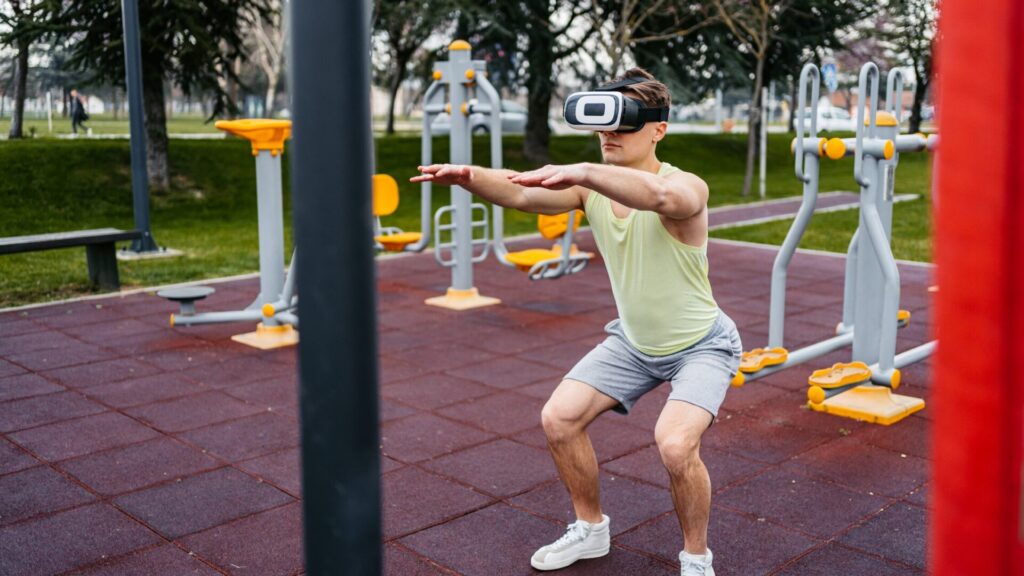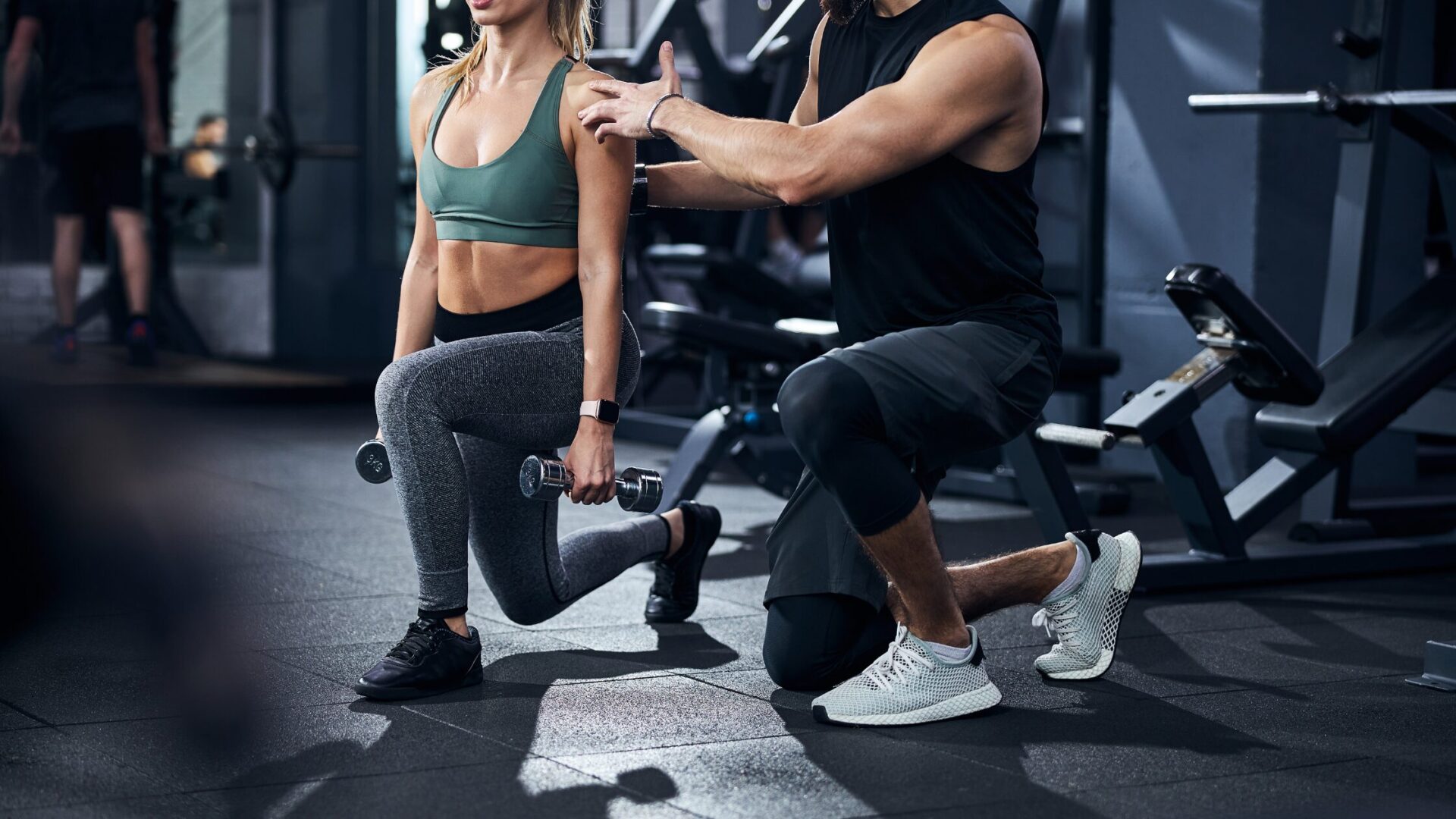Strength training exercises at home In 2024
Introduction
The landscape of home workouts has seen a remarkable transformation over the past few years, largely influenced by advances in technology and shifts in fitness trends. Particularly, strength training exercises at home have gained significant popularity, offering a convenient and efficient way for individuals to engage in physical activity without the need for a gym subscription or expensive equipment. This evolution reflects a broader trend of seeking cost-effective and personalized fitness solutions that cater to a wide range of preferences and fitness levels. The adaptability of at-home strength training routines ensures they are accessible to everyone, from beginners taking their first steps into fitness to advanced practitioners looking to maintain or enhance their physical condition. The proliferation of online fitness platforms and mobile applications has further facilitated this shift, making it easier than ever to find tailored workout regimens that can be performed in the comfort of one’s living space.
The Rise of Home Fitness in 2024

The evolution of home fitness by 2024 is a testament to technological advancement and changing societal needs. With more individuals prioritizing convenience and personalization in their fitness regimes, the landscape of home workouts has expanded to include digital platforms, wearable technology, and virtual reality. These innovations have not only made fitness more accessible but also more engaging and effective for a broader audience.
Digital Platforms
● Online Fitness Communities:
Platforms like FitOn and Peloton have risen in popularity, offering a variety of workout classes that cater to different fitness levels and preferences.
● Mobile Fitness Apps:
Apps such as MyFitnessPal and Strava assist users in tracking their activities, nutritional intake, and progress over time.
Wearable Technology
● Fitness Trackers:
Products like the Fitbit Charge 5 and Garmin Venu 2 monitor heart rate, sleep quality, and daily activity, enabling users to gain insights into their health and fitness levels.
● Smart Clothing:
Innovative garments embedded with sensors, such as the Athos line of apparel, provide real-time feedback on muscle activation and workout intensity.
Virtual Reality (VR) Fitness
● VR Workouts:
Companies like Supernatural offer immersive workout experiences that combine fitness with the excitement of virtual reality gaming.
● VR Fitness Equipment:
Products such as the VirZOOM stationary bike transform traditional exercise equipment into a VR gaming experience, making workouts feel like playful adventures.
The integration of these technologies into the realm of home fitness represents a significant shift towards more dynamic and interactive workout environments. By leveraging digital platforms, wearable tech, and VR, individuals have more tools at their disposal to customize their fitness journeys according to their unique needs and goals.
Essential Equipment for Home Strength Training in 2024

The right equipment can transform any corner of your home into a fully functional gym, tailored to meet your strength training needs. While traditional gear continues to play a critical role in home workouts, 2024 has seen a rise in innovative fitness technologies designed to enhance and personalize exercise routines. Below is a curated list of must-have equipment for anyone looking to set up a modern home gym.
Traditional Gear
● Adjustable Dumbbells:
Compact and versatile, adjustable dumbbells offer a range of weights in one device, making them perfect for space-saving setups.
● Kettlebells:
Ideal for both strength and cardio workouts, kettlebells are a flexible piece of equipment for a variety of exercises.
● Pull-up Bars:
Easily installable on door frames, pull-up bars are great for upper body workouts, requiring minimal space.
New Innovations
● Smart Resistance Bands:
These bands come with sensors that track your performance and provide feedback on your form and intensity.
● Virtual Reality Fitness Games:
VR fitness games bring the excitement and engagement of video gaming to your workout, making exercise feel like an adventure.
● AI Personal Trainers:
Utilizing AI technology, these virtual trainers offer personalized workout plans, real-time feedback, and motivation, adjusting to your progress and preferences.
Tips for Setting Up in Small Areas
● Utilize Wall and Door Space:
Install wall-mounted shelves for storing lightweight equipment and pull-up bars on door frames to maximize floor space.
● Invest in Multipurpose Equipment:
Choose gear that offers a variety of uses, such as adjustable dumbbells or a yoga mat that can also serve as a cushion for floor exercises.
● Arrange for Adequate Lighting and Ventilation:
Proper lighting and airflow are essential for a conducive workout environment, especially in smaller spaces.
● Use Mirrors to Create an Illusion of Space:
Placing mirrors strategically can not only help you correct your form but also make your workout area appear more spacious.
By combining traditional equipment with the latest innovations in fitness technology, it’s possible to create an effective and engaging home gym, even within the constraints of limited space.
Top Strength Training Exercises for Home Workouts in 2024
The future of home fitness is heavily intertwined with advancements in technology, providing enthusiasts with more efficient, engaging, and personalized workout experiences. Below are some top trending strength training exercises in 2024 that embody this shift towards a technologically integrated fitness regime.
1. Virtual Reality Squats

● Equipment Needed: VR Headset (e.g., Oculus Quest 2)
● Target Muscles: Quadriceps, Hamstrings, Glutes, Lower Back
● Step-by-Step Guide:
1. Place the VR headset on and select a squat-based game or workout session.
2. Stand with your feet shoulder-width apart.
3. Bend your knees and lower your body as if sitting back into a chair, keeping your chest up and back straight.
4. Push through your heels to return to the starting position.
● Technological Integration: Engage in immersive environments that motivate you to squat deeper and hold longer, gamifying the exercise.
● Benefits: Enhances leg strength, improves balance, and increases core stability.
2. AI-Guided Push-Ups

● Equipment Needed: Smartphone with AI Trainer App
○ Target Muscles: Chest, Shoulders, Triceps
○ Step-by-Step Guide:
○ Place your smartphone on the floor in front of you in a horizontal position.
○ Get into a high plank position, hands slightly wider than shoulder-width apart.
○ Lower your body until your chest nearly touches the floor.
○ Push yourself back up to the original position.
○ Technological Integration: The AI Trainer App uses the smartphone camera to analyze your form, offering corrections and counting your reps.
○ Benefits: Builds upper body strength, enhances core stability, and promotes muscular endurance.
3. Smart Resistance Band Rows

○ Equipment Needed: Smart Resistance Bands (e.g., Tonal Smart Bands)
○ Target Muscles: Back, Biceps, Shoulders
○ Step-by-Step Guide:
○ Secure the smart resistance band at waist height.
○ Stand or sit a few feet away from the anchor point, holding the band handles with both hands.
○ Pull the handles towards your waist, keeping your elbows close to your body.
○ Slowly extend your arms back to the starting position.
○ Technological Integration: These bands connect to an app that tracks your pull strength, and reps, and offers real-time feedback on form.
○ Benefits: Improves back strength, enhances grip strength, and aids in posture correction.
4. Interactive Planking

○ Equipment Needed: Fitness Mat, Plankpad App
■ Target Muscles: Core, Shoulders, Arms
■ Step-by-Step Guide:
■ Place your forearm on the fitness mat, ensuring your elbows are aligned beneath your shoulders.
■ Extend your legs behind you, forming a straight line from head to heels.
■ Engage your core, squeezing your glutes and thighs to maintain the position.
■ Use the Plankpad app on your smartphone or tablet for an interactive workout.
■ Technological Integration: The app transforms planking into a game, making it more fun and challenging.
■ Benefits: Strengthens the core, improves posture, and reduces back pain.
○ Incorporating these exercises into your home workout routine not only leverages the latest in fitness technology but also ensures a comprehensive approach to strength training. By engaging with AI, VR, and smart devices, individuals can enjoy a more interactive and effective fitness experience, all from the comfort of their homes.
Incorporating technology into your home workout is a strategic way to enhance effectiveness, closely track progress, and maintain motivation. With the advancement of mobile apps, online platforms, and wearable technology, creating an efficient and personalized fitness regime has never been easier.
Apps designed for fitness aid in structuring workout routines, providing instructional videos for each exercise, and even offering nutritional advice to complement physical efforts. They can also connect you with a global community, transforming solitary workouts into a shared experience.
Online platforms often feature live classes, enabling users to feel part of a class from the comfort of their homes. The sense of community, along with the professional guidance from trainers, can significantly increase motivation and commitment to a fitness routine.
Wearable technology, such as fitness trackers and smartwatches, offers instant feedback on physical performance, including heart rate, calories burned, and sleep quality. This real-time data is crucial for adjusting workouts to meet fitness goals efficiently. Wearables can also send reminders and motivational messages, helping users stay focused and committed to their fitness journeys.
By seamlessly integrating these technological tools into your workout routine, you unlock a world of personalization, motivation, and measurable progress, propelling you toward your fitness objectives with precision and enthusiasm.
Customizing Your Strength Training Routine
Creating a personalized workout plan requires careful consideration of your unique goals, availability, and current fitness level. Here are some tailored strategies to help you design an effective and sustainable strength training routine.
■ Define Your Fitness Goals:
○ Determine what you aim to achieve through strength training, such as building muscle mass, enhancing endurance, or losing weight. This will guide your exercise selection and intensity.
○ Assess Your Schedule:
○ Look at your weekly schedule to identify realistic times you can dedicate to working out. Consistency is key, so find slots that you can commit to regularly.
○ Consider Your Fitness Level:
○ Tailor the difficulty of your exercises to match your current fitness level. Start with foundational movements and gradually introduce more challenging exercises as you progress.
○ Incorporate Variety:
○ Mix different types of strength training exercises, such as bodyweight exercises, free weights, and resistance bands. This not only keeps your routine engaging but also targets various muscle groups.
○ Monitor Progress and Adapt:
○ Regularly assess your progress towards your goals. Adjust your routine accordingly if you find certain exercises too easy or hard.
○ Seek Professional Guidance:
○ Consider consulting a fitness professional to help design your workout plan. Their expertise can provide personalized advice and ensure your exercises are performed safely and effectively.
● The Vital Role of Rest and Recovery in Strength Training
Rest and recovery are pivotal components of any strength training regimen, often regarded as just as crucial as the workouts themselves. This period allows your muscles time to heal and grow stronger. During exercise, muscle fibers experience micro-tears, and it is through the process of repairing these tears that muscle growth occurs. Thus, without sufficient rest, not only is muscle development hindered, but the risk of injury significantly increases.
Additionally, rest days help prevent burnout and mental fatigue, ensuring that motivation and performance levels remain high. Incorporating active recovery methods, such as light cardio, yoga, or stretching, can further enhance this recovery process, promoting blood flow and nutrient delivery to the muscles aiding in faster and more efficient recovery.
Acknowledging the importance of rest and recovery in your strength training routine is essential for sustainable progress, injury prevention, and overall health. It’s crucial to listen to your body and give it the time it needs to recover fully so you can return to your workouts stronger and more prepared than ever.
Beyond the Basics: Advanced Techniques and Tools
Once you’ve mastered the foundational exercises and incorporated technology into your routine effectively, you may be ready to challenge yourself further with more advanced techniques and equipment. These additions can help you break through plateaus, increase muscle strength and endurance, and keep your workouts engaging and effective.
Advanced Exercises and Equipment
○ Suspension Training Systems: Utilize your body weight and gravity to perform a wide range of exercises that can improve strength, flexibility, and balance.
○ Olympic Weightlifting: Incorporate Olympic lifts, such as the clean and jerk or snatch, to develop explosive power and full-body strength. Start with light weights and focus on form to avoid injury.
○ Kettlebell Complexes: Engage multiple muscle groups and elevate your heart rate by combining different movements into a fluid sequence using kettlebells.
○ High-Intensity Interval Training (HIIT): Maximize fat burn and improve cardiovascular health by interspersing short bursts of intense exercise with brief recovery periods.
● Hybrid Fitness: Combining Online Coaching with Personal Workouts
Hybrid fitness programs blend the convenience and flexibility of online coaching with the personalization and accountability of in-person workouts. This approach allows individuals to access tailored fitness advice and programming from anywhere in the world while still enjoying the motivational benefits of direct interaction with a coach.
○ Benefits of Hybrid Fitness:
○ Personalization: Workouts and nutrition plans can be tailored to meet your specific goals, preferences, and needs.
○ Flexibility: Access your workouts and communicate with your coach on your schedule, making it easier to stay consistent.
○ Accountability: Regular check-ins with your coach help keep you on track towards your goals.
○ Cost-Effectiveness: Combining online and in-person coaching can be more affordable than exclusively hiring a personal trainer.
● Incorporating advanced exercises and equipment into your routine, along with exploring hybrid fitness options, can significantly enhance your workout experience. These
strategies not only elevate the physical challenge but also provide the tools and support necessary for sustained progress and success in your fitness journey.
Staying Motivated and Tracking Progress
Maintaining motivation and tracking progress are critical factors in the success of any fitness regimen. Setting realistic goals, closely monitoring achievements, and finding ways to stay motivated over time are key strategies that can significantly impact your fitness journey.
○ Setting Realistic Goals: Begin by setting achievable short-term goals that lead towards your main long-term objectives. These goals should be specific, measurable, attainable, relevant, and time-bound (SMART).
○ Monitoring Achievements: Keep a fitness journal or use a digital app to record your workouts, track your progress, and adjust your goals as needed. Celebrating small victories can boost your motivation.
○ Maintaining Motivation: Identify your intrinsic motivations for staying fit, such as feeling healthier or improving your mood. External motivators, like participating in a fitness challenge or working towards an event, can also keep you focused.
○ Seeking Social Support: Engage with a community of like-minded individuals who share your fitness goals. This could be through online forums, local fitness groups, or workout buddies. Social support can provide accountability and encouragement.
○ Reflecting on Progress: Regularly take time to reflect on how far you have come in your fitness journey. Recognizing the changes in your strength, endurance, and overall health can be a powerful motivator to keep going.
By incorporating these strategies, you can ensure a sustained effort towards your fitness goals, overcome any obstacles, and achieve long-term success in your health and fitness journey.



